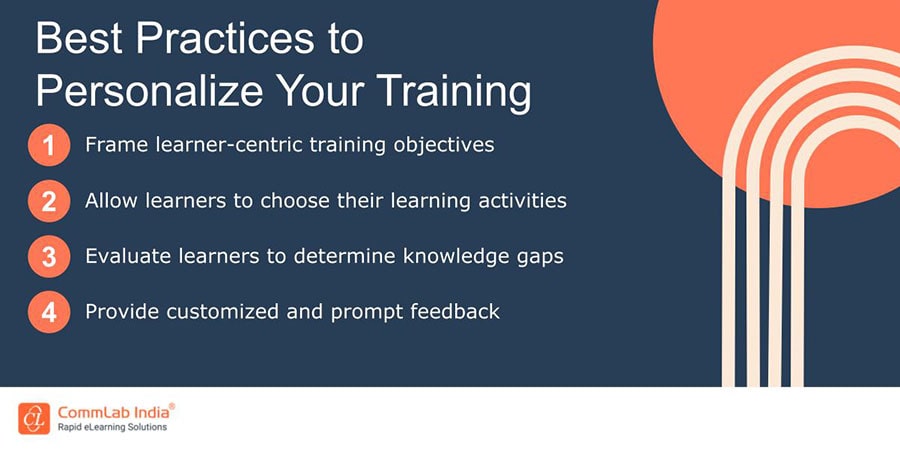Skills Gap Equals Billions Lost! 7 Tips to Design Future-Proof Technical Skills Training

The world of work is evolving faster than ever before. Disruptive technologies like artificial intelligence, automation, and cloud computing are transforming industries at lightning speed. Unfortunately, there's a growing mismatch between the technical skills that businesses need and the skills that workers possess. This widening "skills gap" has alarming economic consequences as companies lose out on productivity, innovation, and ultimately, billions in potential revenue.
Want to Design Future-Proof Technical Skills Training?
Here are a few tips to do so -
- Identify the skills of tomorrow
- Prioritize ‘power skills’
- Personalize training paths
- Champion a culture of learning
What is The Cost of the Skills Gap?
- Lost Productivity: When companies can't find the right talent, projects stall, deadlines are missed, and overall productivity declines. This translates to less revenue and stifled growth.
- Stifled Innovation: New ideas and disruptive technologies can transform industries, but only if businesses have the people to turn those ideas into reality. Without the right skills, companies miss opportunities and fall behind.
- Eroding Competitiveness: Skills gaps directly impact a company's ability to innovate and compete, both in local and global markets. A lack of skilled workers can weaken entire industries within a nation.
- Economic Losses: The skills gap doesn't just affect individual businesses. It has macroeconomic impacts. Various studies have estimated the cost to the global economy could be in the trillions of dollars due to lost economic output.
→ Download Infographic Now: Rapid eLearning Development for Skill Development
So, Why Does the Skills Gap Persist?
- Rapid Technological Change: New technologies and software emerge and evolve at breakneck speed. Training often lags behind, unable to keep pace with the latest industry requirements.
- Inadequate Investment in Training: Businesses and governments sometimes fail to put enough emphasis on upskilling and reskilling the existing workforce. Training is often seen as an expense, not a long-term investment. Here are a few upskilling platforms you can try -

- Training Misalignment: There's often a disconnect between traditional training paths and the specific, rapidly changing skills that the modern workplace demands.
- Talent Mobility Issues: Even when skilled workers exist, they may not be geographically located where they're needed most. Companies in certain areas may struggle with talent shortages even if the workers exist elsewhere.
7 Tips for Creating Future-Proof Training
Bridging this skills gap demands a change in our approach to technical training at the workplace. Here's a blueprint for businesses and organizations:
1. Identify the Skills of Tomorrow
Don't focus solely on immediate needs. Analyze industry trends, consult with experts, and examine emerging technologies to predict the technical skills that will be essential in the coming years.
2. Prioritize 'Power Skills'
While technical skills are crucial, soft skills – "power skills" – are equally vital in a world of constant change. Build training that promotes critical thinking, problem-solving, adaptability, communication, and other relevant work skills.
3. Embrace Agile Learning
Move away from rigid training schedules to a model of continuous learning. Provide employees with short, targeted microlearning opportunities, on-demand resources, and the flexibility to learn what they need, when they need it.
4. Personalize Training Paths
One size does NOT fit all in learning. Create training programs that offer a mix of options – online modules, formal courses, mentorship programs, and practical experience. This ensures each learner's needs are met.

5. Partner with Educational Institutions
Universities, technical colleges, and coding boot camps can be valuable allies. Collaborations bring access to the newest industry knowledge, allowing your training programs to prepare workers for the cutting edge.
6. Leverage Apprenticeships and Internships
These programs are invaluable for bridging the theoretical and the practical. Apprenticeships and internships benefit both employers, who gain access to new talent, and learners, who gain critical on-the-job experience.
7. Champion a Culture of Learning
Make continuous learning a foundational element of your company culture. Provide dedicated time, resources, and incentives to make upskilling an ongoing priority. Celebrate the pursuit of knowledge!
Additional Considerations for Success
1. Diversity and Inclusion
The tech world, in particular, struggles with a lack of diversity. This exacerbates the skills gap by failing to utilize the full potential of the talent pool. Design inclusive training programs to reach underrepresented groups, and build pathways for career advancement that remove systemic barriers.
2. Data Analytics
Data isn't just for marketing and sales - it's your friend in training, too! Use data analytics to track the effectiveness of different programs, identify individual skill gaps, measure ROI of training investment, and guide future learning initiatives.
3. Government Collaboration
National economic competitiveness depends, in part, on closing the skills gap. Proactively work with government agencies and policymakers to support workforce development programs, skills-based immigration policies (where applicable), and incentives for businesses to prioritize training initiatives.
It's Not Just About Businesses
- Individual Responsibility: Individuals must embrace the mindset of lifelong learning. Proactively seek out opportunities to update skills, network in your desired field, and take ownership of your career development.
- Education Reform: Traditional educational institutions need to evolve alongside the workplace. This means more collaboration with industry, emphasis on practical skills, and flexible pathways catering to adult learners.
- Public Policy Support: Government programs can incentivize skills training, offer career transition assistance, and ensure training is accessible and affordable for those seeking to reskill.
The Bottom Line
The skills gap is a complex challenge, but not insurmountable. By proactively investing in future-proof technical skills training, businesses can bridge the gap, boosting productivity, innovation, and ultimately, their bottom line. Remember, an investment in worker skills is an investment in the future success of your company and the broader economy. Here’s a bonus infographic to help you understand how rapid eLearning can help with skill development.





